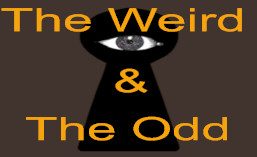
Fertility, rebirth, and resurrections have been apart of human culture since the dawn of civilization. The bunny and the egg are universal symbols representing fertility and rebirth. Cultures throughout time have been celebrating the rebirth of life by paying homage to old gods and goddesses of spring, commemorating the resurrection of Jesus, or still pondering the unsolved philosophical question, “which came first the chicken or the egg?”.

A decorated ostrich egg over 60,000 years old
Ostara or Eostre
Anglo-Saxons were Germanic inhabitants of Europe between the 5th and 11th century until the Norman Conquest. Before the 8th century, Eostre was a Saxon goddess of Dawn and Spring. The hare was considered to be her sacred animal representing fertility and the egg was a symbol for rebirth. The Scandinavians of this time period referred to her as Ostra and those who lived in the area now known as Germany called her Ostara. In Germany today they celebrate Ostern which is Easter to the english speaking world. There were many other gods and goddesses worshiped by ancient cultures during the spring equinox around the Mediterranean Sea, but Eostre is so far the only pagan goddess that has a direct influence on the modern holiday Easter.

Passover
In Judaism, Passover is one of the three Shalosh Regalim, or 3 pilgrimage festivals. People would gather in Jerusalem at springtime with their agricultural offerings. On the first night of Passover a seder (order) meal that has 15 separate steps in a traditional order is prepared. At sometime during the seder the telling of the story of Exodus from Egypt and the first Pesach (Passover) is told. The seder ritual objects can vary by tradition but most common are a shank bone, lettuce, an egg, greens, a bitter herb, and a mixture of apples, nuts and spices. The egg represents the Passover offering of ancient days as well as the wholeness and continuing cycle of life.

The Resurrection of Jesus
Christians celebrate Easter as a remembrance of the resurrection of Jesus. Jesus was crucified and resurrected during Passover. In 325 AD the Council of Nicaea determined that Easter should be the Sunday that follows the first moon, after the Spring Equinox. On the Gregorian calendar, (named after Pope Gregory XIII) that would fall between 22nd of March and 25th of April. The Christian custom of Easter eggs started with early Christians of Mesopotamia who colored eggs red to represent the blood of Christ.

The Easter Bunny
The Easter Bunny is the egg-laying bunny that leaves colored Easter eggs on Easter Sunday. In the 1700’s German immigrants brought this tradition into America. The parents told their children to use their bonnets or caps as nests and leave them out at night before going to bed and if they were good, the Easter Bunny (Oschter Haws or Osterhase) would leave them eggs in their nests. Eventually traditions evolved where the egg-laying bunny would lay and hide the eggs for the children to hunt.

Final Thoughts…
For those of you who have been losing sleep over the metaphysical question, “which came first, the chicken or the egg?”. It’s simple of course; the magical bunny laid the egg and out hatched the chicken. Now you can get some sleep and have a good night.

References
Patterson, R. (2011, April 19). Is the Name “Easter” of Pagan Origin? Retrieved April 25, 2018, from https://answersingenesis.org/holidays/easter/is-the-name-easter-of-pagan-origin/
The Pagan origins of Easter. (n.d.). Retrieved from http://www.religioustolerance.org/easter1.htm
Ēostre. (2018, April 18). Retrieved April 25, 2018, from https://en.wikipedia.org/wiki/Ēostre
(n.d.). Retrieved from http://archives.adventistreview.org/article/1062/archives/issue-2007-1509/jews-revive-the-sanhedrin-with-plans-for-a-passover-sacrifice/adventists-and-easter
Passover: Customs and Rituals. (2018, February 06). Retrieved April 25, 2018, from https://reformjudaism.org/passover-customs-and-rituals
Easter egg. (2018, April 20). Retrieved April 25, 2018, from https://en.wikipedia.org/wiki/Easter_egg
Travers, P., & ABC Radio Canberra. (2017, April 13). Origin of Easter: From pagan rituals to bunnies and chocolate eggs. Retrieved April 25, 2018, from http://www.abc.net.au/news/2017-04-15/the-origins-of-easter-from-pagan-roots-to-chocolate-eggs/8440134
Origins of Easter. (n.d.). Retrieved April 25, 2018, from https://sydney.edu.au/news-opinion/news/2017/04/13/origins-of-easter.html
Origin Of Easter. (n.d.). Retrieved April 25, 2018, from https://www.allaboutjesuschrist.org/origin-of-easter.htm
Is it true that the name Easter is pagan in origin? (n.d.). Retrieved April 25, 2018, from https://billygraham.org/answer/is-it-true-that-the-name-easter-is-pagan-in-origin/
Sifferlin, A. (2015, April 01). Easter Bunny: The Origins of Easter Day’s Rabbit. Retrieved April 25, 2018, from http://time.com/3767518/easter-bunny-origins-history/


obviously like your web site however you need to check the spelling on quite a few of your posts. Several of them are rife with spelling issues and I in finding it very troublesome to inform the truth nevertheless I will surely come again again.
LikeLike